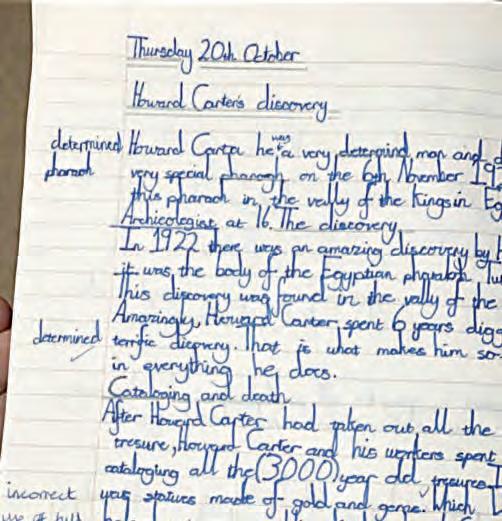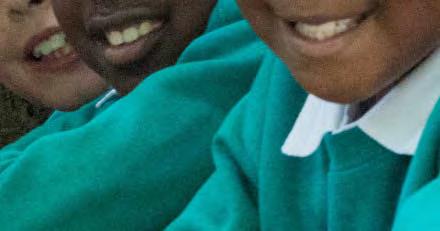
2 minute read
How does it work? : Six Stages
How does it work?
There should always be a purpose for writing and wherever possible a real audience. This dictates what type of writing we use. It may be that the aim is to persuade the headteacher to allow pupils to go on a school visit, or to write a report for a school magazine or another class. Whatever the case, pupils always need to consider:
P A T
Purpose – why am I writing? Audience – who is going to read my writing? Type – what is the most appropriate format to use?
When these aspects have been decided, the IPEELL writing strategy is used to help structure the outcome.


Example of child's initial task
Six stages of the IPEELL approach
Stage 1: Why write?
Discuss why writing in a particular type of text is important Set an initial task by asking the pupils to write on a given topic
Stage 2: Discuss it
Read a model text in the same text type Analyse it in terms of purpose, structure and language features Introduce the mnemonics PAT and IPEELL and link them to the model text Introduce a planning frame Create a mark scheme from the features Discuss positive attitudes towards writing
Stage 3: Model it
Model positive self-talk Model planning and writing using IPEELL and the mark scheme Score the model report using IPEELL Model goal-setting based on the scoring Score the initial task using the mark scheme Introduce charting of scores Pupils chart their scores and set goals Pupils write a further piece and score it using the mark scheme
Stage 4: Memorise it
Use different activities to help pupils memorise IPEELL
Stage 5: Support it
Model writing using a self-instruction plan checklist Pupils produce their own self-instruction plan checklist Fade and eventually remove the planning frames
■ Extend writing by providing more detailed models and more detailed scoring ■ Introduce peer review and scoring ■ Refine goal setting ■ Keep going until the strategy is embedded
Stage 6: Independent practice
■ Pupils write independently


Work produced by the same child after following the IPEELL process









